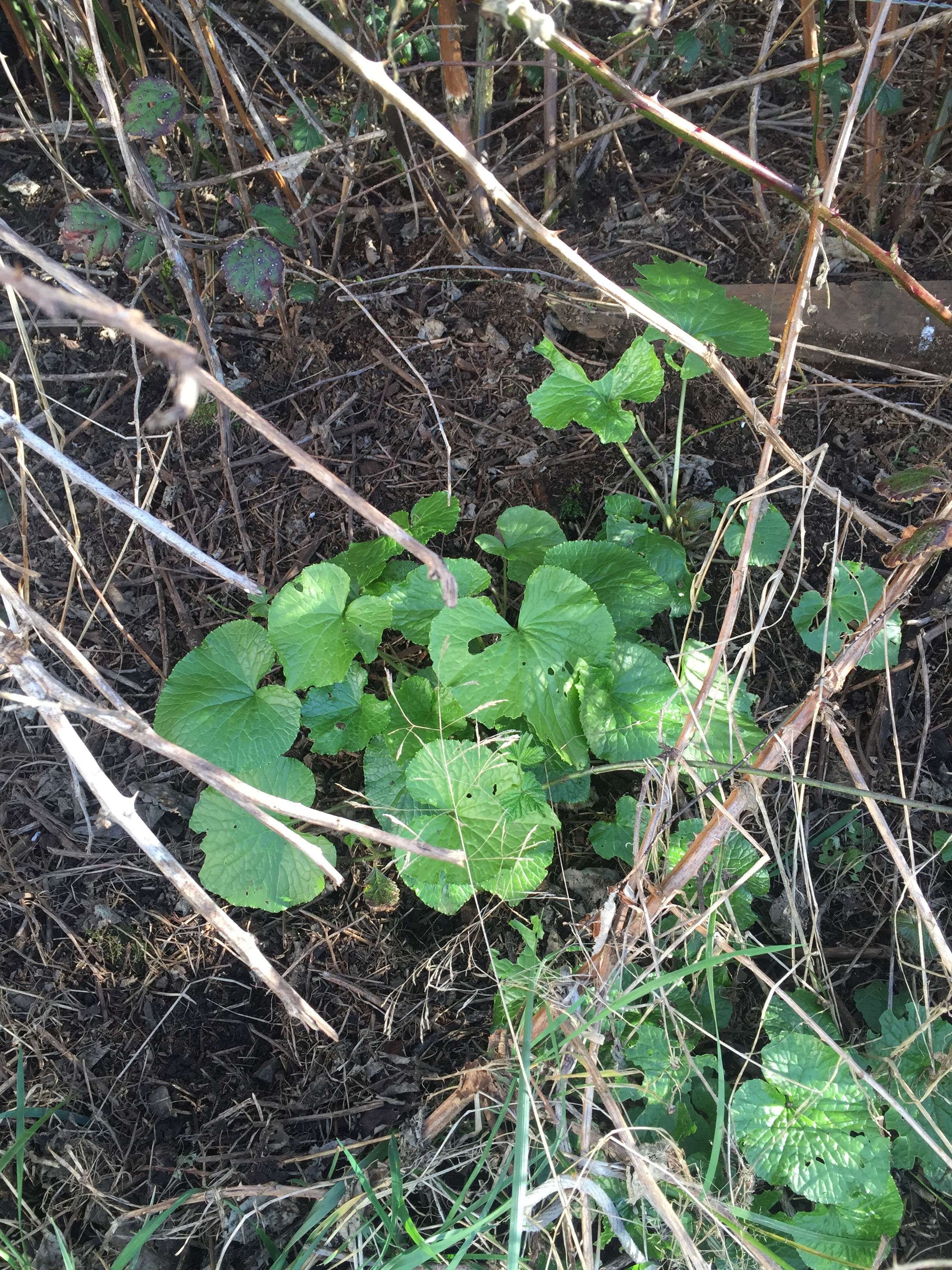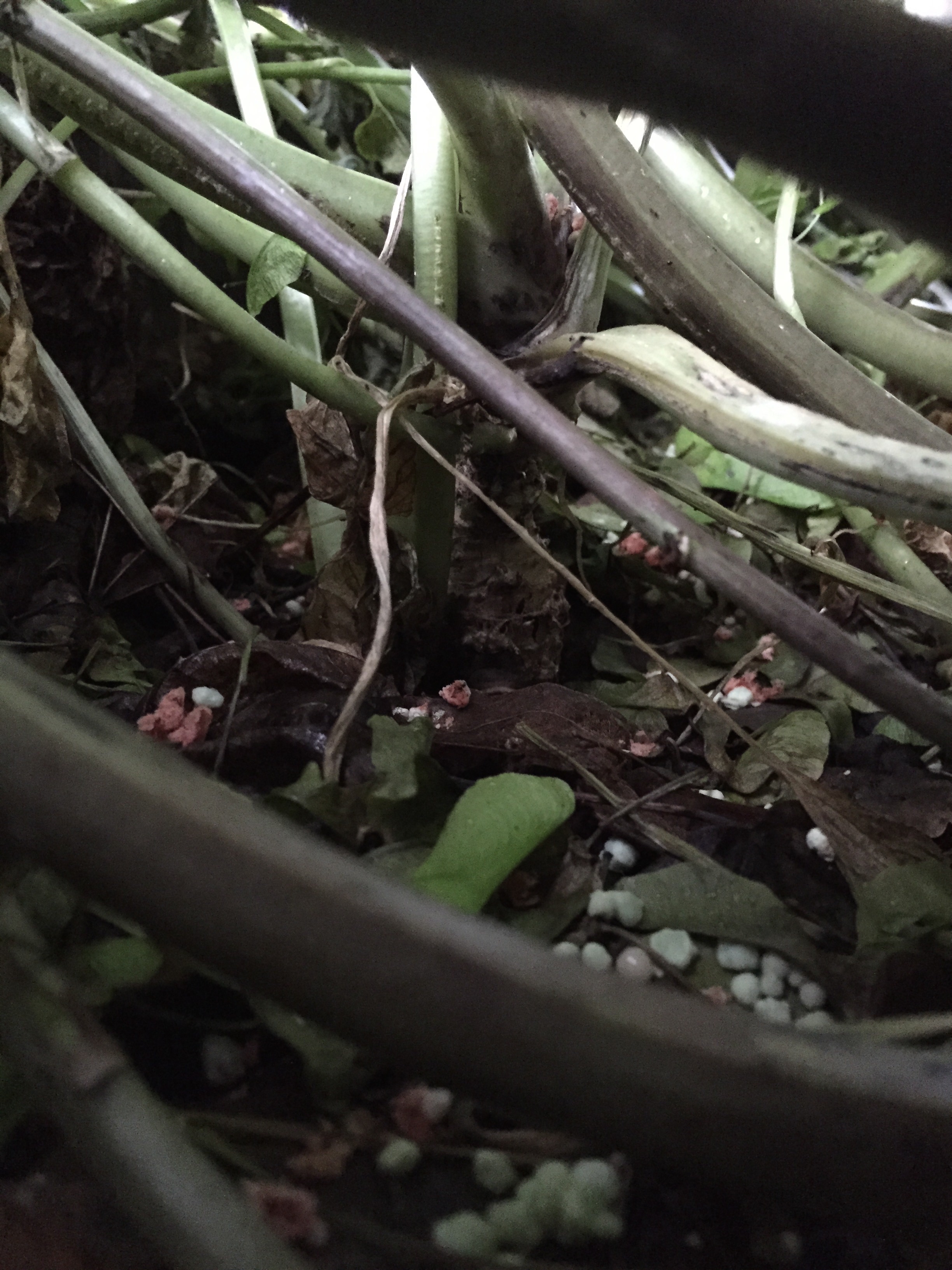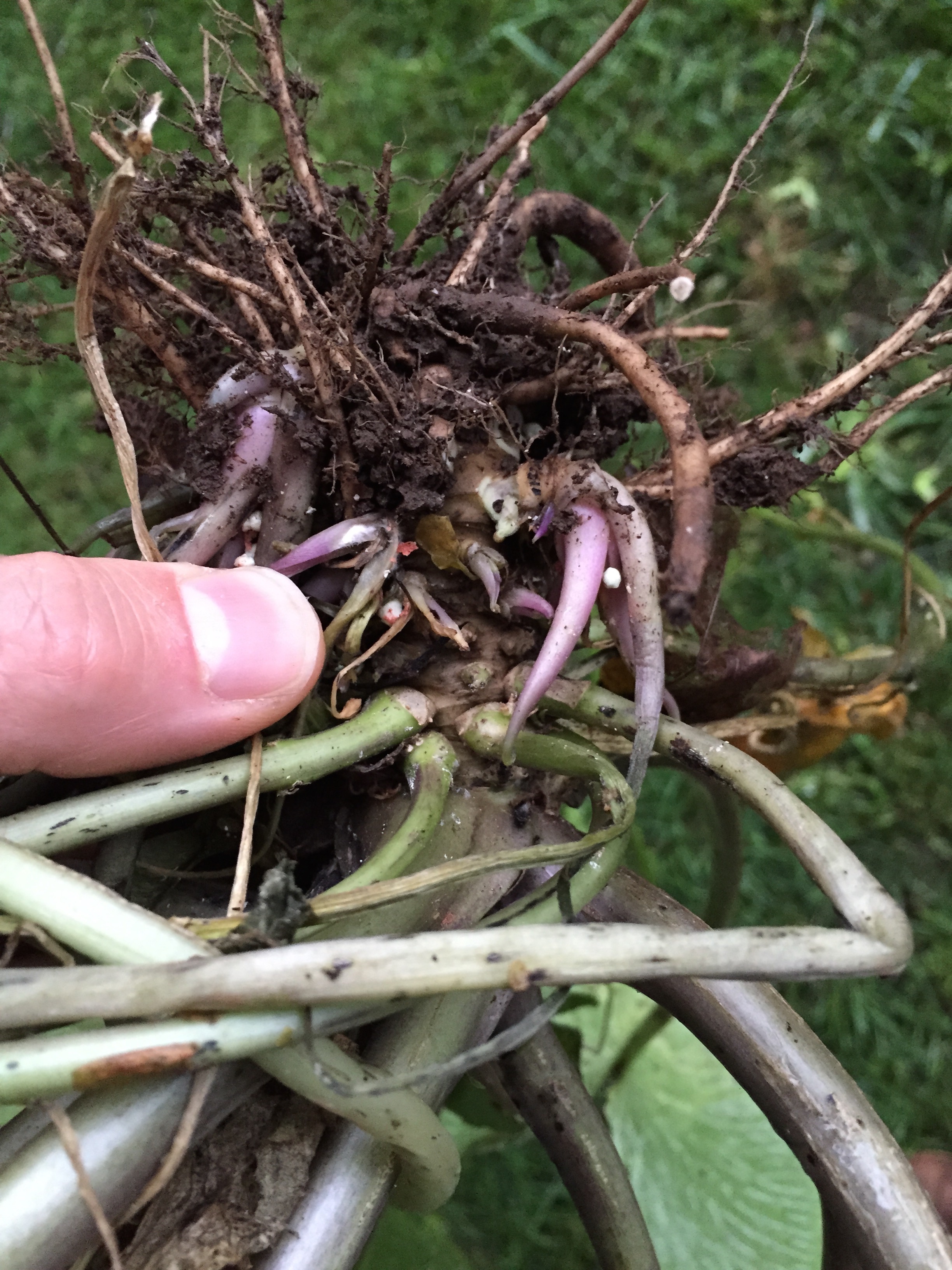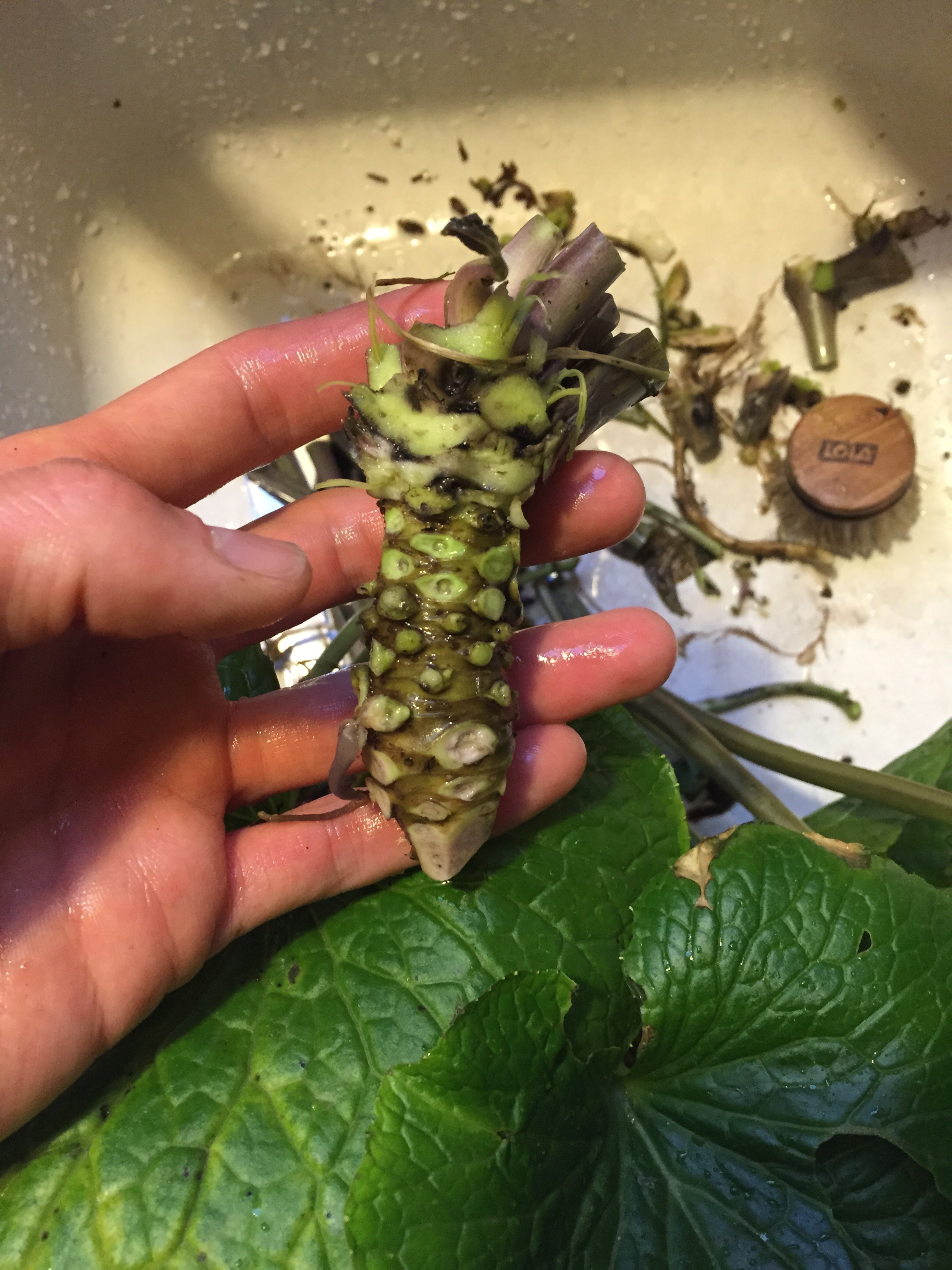If (when) the ambient air temperature surpasses 80dF, the plants will stop growing and likely wilt (particularly if not watered daily). If this occurs, keep watering; maintain hope, they should regrow once the temperatures drop again. Do not compost the plants; they are only waiting for the temperatures to drop again. Remember, wasabi is really hardy. See our blog post about plants being in the refrigerator for 8 months in a totally sealed/anaerobic environment and still growing. If you garden is too hot, keep watering, or if you planted them in a sunny location, use this opportunity to transplant them. The plants in the shrubbery below are under the blackberry hedgerow. They've been there for 5 years. We've been monitoring them. We tossed offshoots here as an experiment. No watering, no tending, no special sauce, no care whatsoever (and no sunlight in the summer months). The plants are growing each year. They reduce a bit in summer and rejuvenate in Autumn and really reinvigorate in the Spring. If these are any example for you; keep watering. Wasabi's natural habitat is alpine streams; under fir canopy and in or near streams with that cold water and air cell around it. (Ever walk near a stream on a hot summer night when the air was still and the temperature drops ~15d?) Once the plants are outside their desired conditions, they rebel by shutting down to preserve energy. Just don't let them get dry and they should rally once the scarves return to your wardrobe.
Wasabi in Everybody's Garden
Wasabi rhizomes can grow in the garden. Absolutely they can. Ours did. No secret sauce added. We planted these in September 2014. Several months later, a small rhizome with enough paste for a sushi dinner for a few diners. We used a couple handfuls of 14-14-14 fertilizer three times during the growing duration (note, the offshoots were planted in autumn and grew throughout the winter). These were just like the small, trimmed offshoots we sell. They grew happily in full shade (I can't stress this enough). They were planted in a wine barrel which had amended soil. That's it. The wasabi paste was spicy and tangy and would definitely accompany fish or do well in a sauce. The reddish colored paste is from the root area and is because it's a mazuma variety. The green colored paste is from the top of the rhizome and is a bit more watery, but definitely flavorful. Note that in photo two, there are little purple offshoots that could be broken off and replanted to propagate more wasabi in the garden. As wasabi suffers very little transplant shock, one could dig up the plant, remove the offshoots and then expand the wasabi patch.
Well, now we know it works outside the greenhouse and without the benefit of the secret sauce. (Though, we knew that already. Check out the very last picture which are wasabi plants that have been growing under our blackberry hedgerow for several years. They're now wild field wasabi.)
Next experiment: grow the rhizome in the garden, cut off the apical meristem and re-plant to see if it regrows (it does in the greenhouses at the farm). Also remember, the leaves and stems can be eaten at any time.
The first photo is at ground height - it's a bit disorienting. The photos are in sequence from harvesting to grating.
Summer's Coming, But I Wish It Were Autumn
The rhizomes are getting larger each day. They are green, healthy, hot and flavorful. The flavor is really developing well. One of the joys of farming is to observe (read: taste and enjoy) the taste progression/maturation of your crop. The same is true with wasabi. The heat and flavor are much more developed at about 80grams than 30grams. I think the flavor even improves at 120grams. But, we got to enjoy our first dish with this years' budding crop. Our new friend Eric at Bar Avignon generously plied us with fresh Netarts Bay oysters and our other new friends at DeGarde Brewing generously shared their beer. I've told anybody that will listen that it's the best beer I've ever tasted. With wasabi the smoke flavor in the oysters really popped with that added heat. The sweet vegetable flavor really extended the oyster flavor and mellowed it somewhat. But, in the half shell, the sour beer with the brine was outstanding. I want Autumn to be here so I can share more rhizomes with friends and customers, but I am very excited for summer with oysters and a pint at the foot of Netarts Bay with our new friends.
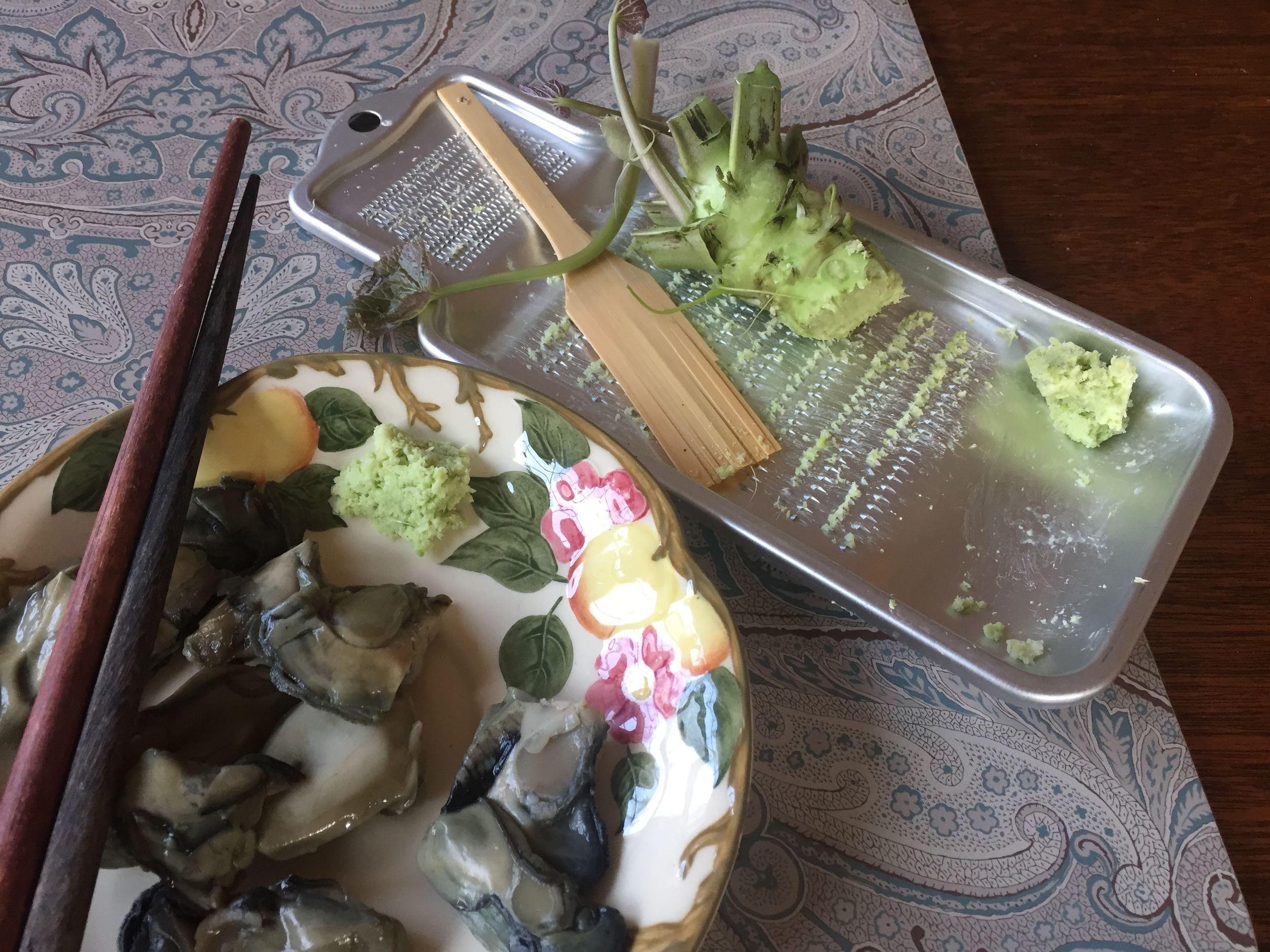
Rhizomes! Ready for Eating About Oct. 2015
Rhizomes are here again! Just like the first flower buds of Spring, the first signs of rhizomes are bedazzling Frog Eyes Farm. They should add about 10 grams per month and be ready by about October 2015. We will keep updating this site. Please go to the website and get on the waiting list for rhizome availability notification. The small rhizomes have good color, taste and overall health. The sweetness is already forming well and nearly no bitterness. I'm looking forward to autumn steak, potatoes, big/bold riesling and a big dollop of wasabi. We are of course still selling plant starts through the website to the public, nurseries and burgeoning wasabi farmers. We will continue to sell these while we sell rhizomes to the culinary market.
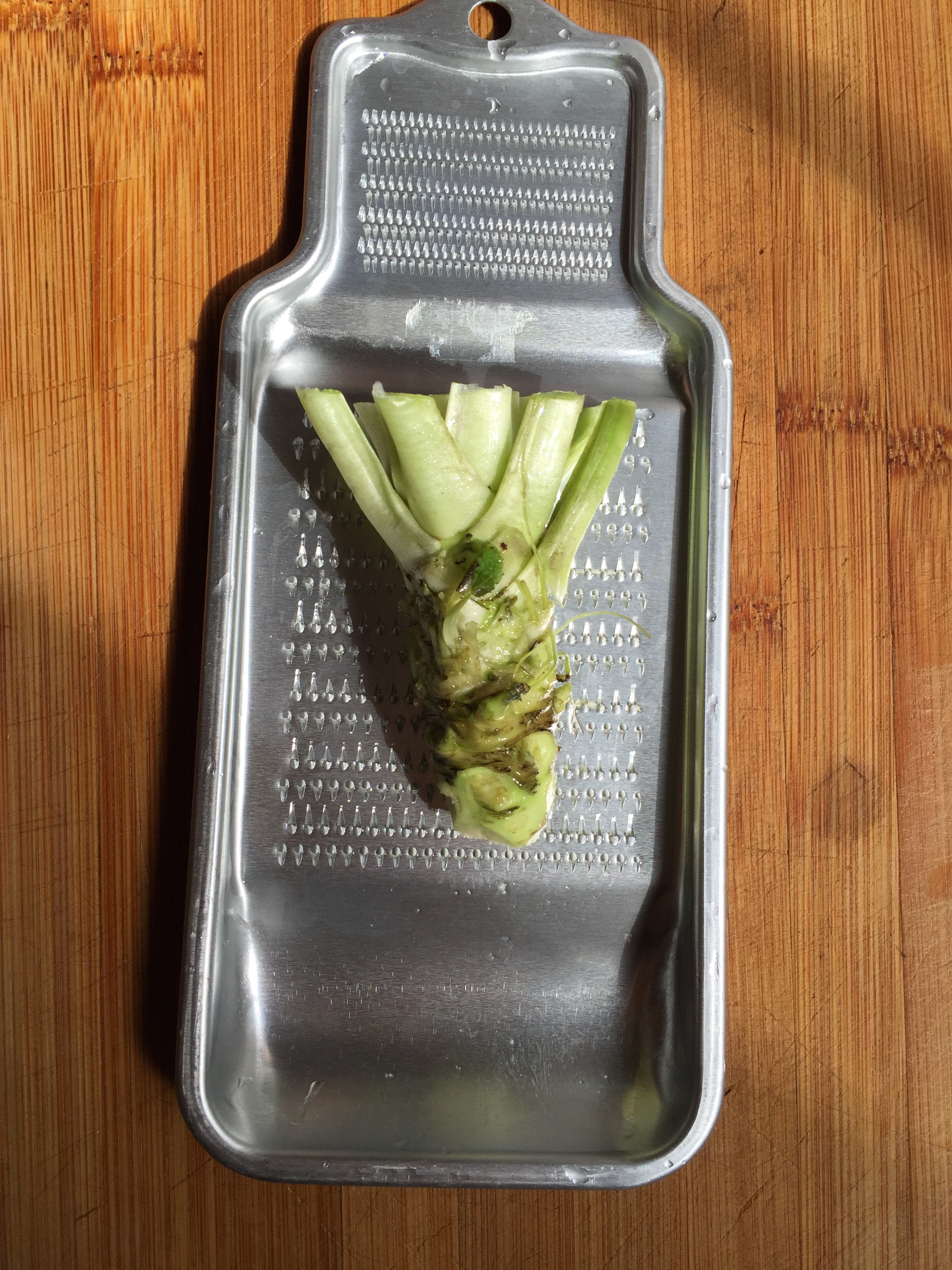
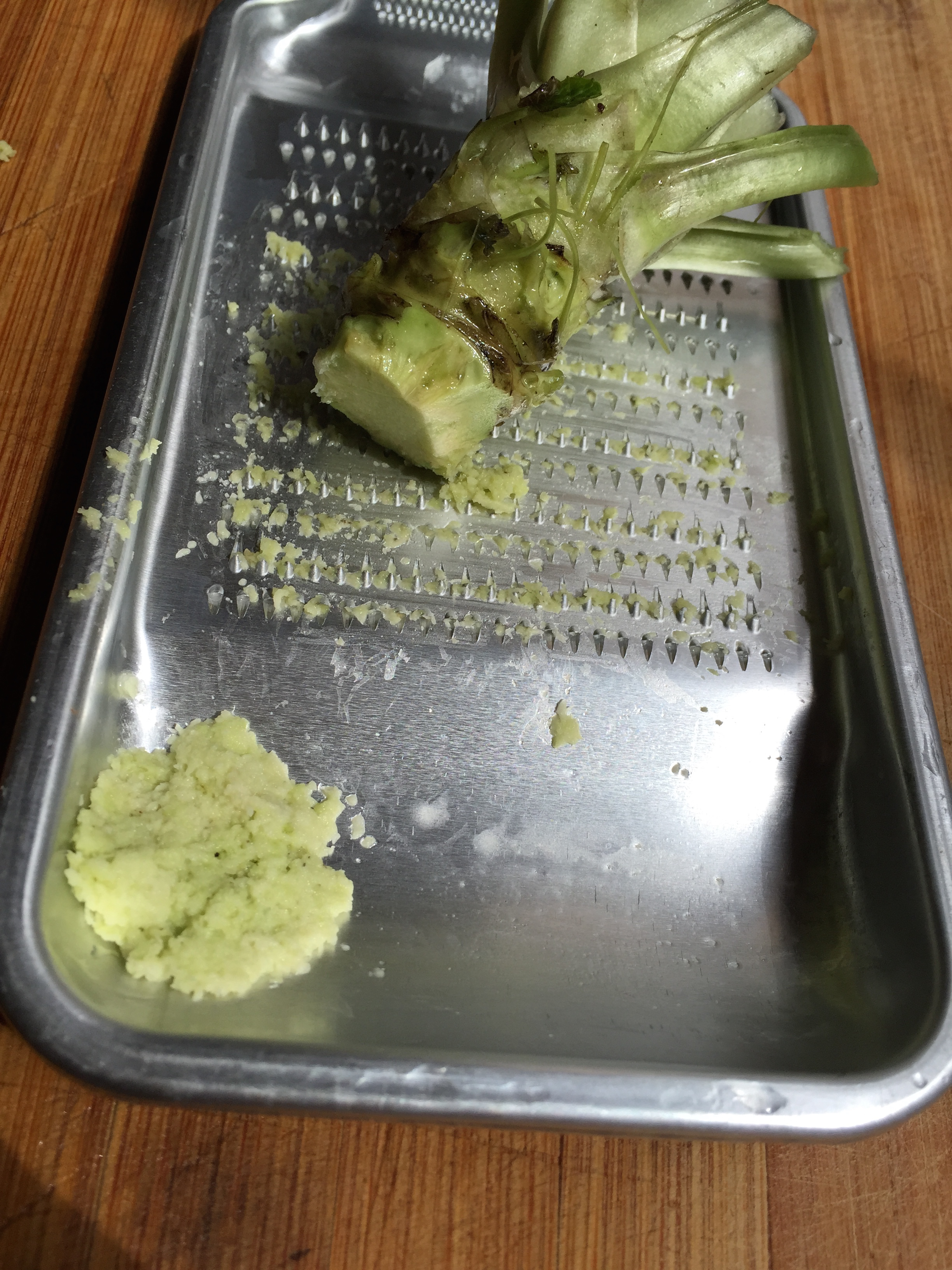
Plant Start Update
A few weeks ago, I harvested some leaves and stems from the wasabi plants in our garden (not the farm). I also promised that the plants would grow back. Well, they certainly did do just that. Don't be trepidatious to harvest leaves and stems. The >30% rule doesn't apply. Go for it. Make a memorable meal. The plants will be fine. In fact, for ours, even post- harvest the plants sent out even more flowers (which make a great tea by the way). For those buying wasabi starts, there are about 6 offshoots in this barrel. These are planted a bit denser than I'd recommend.



